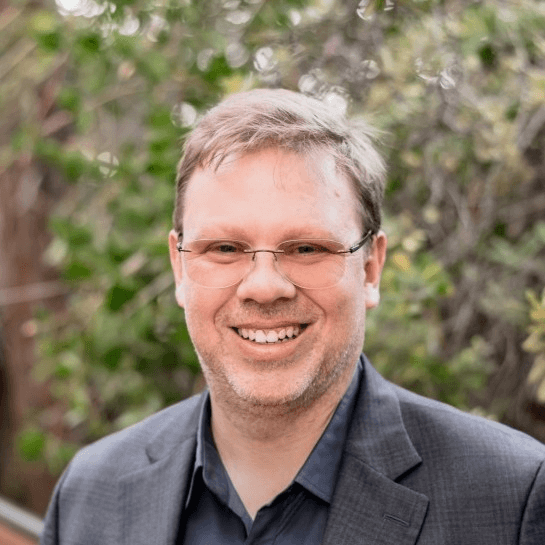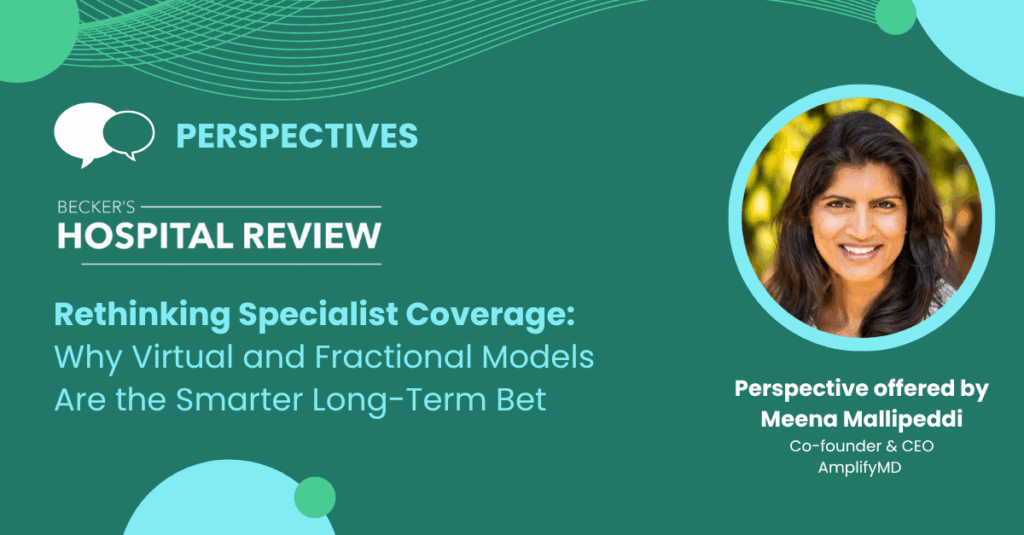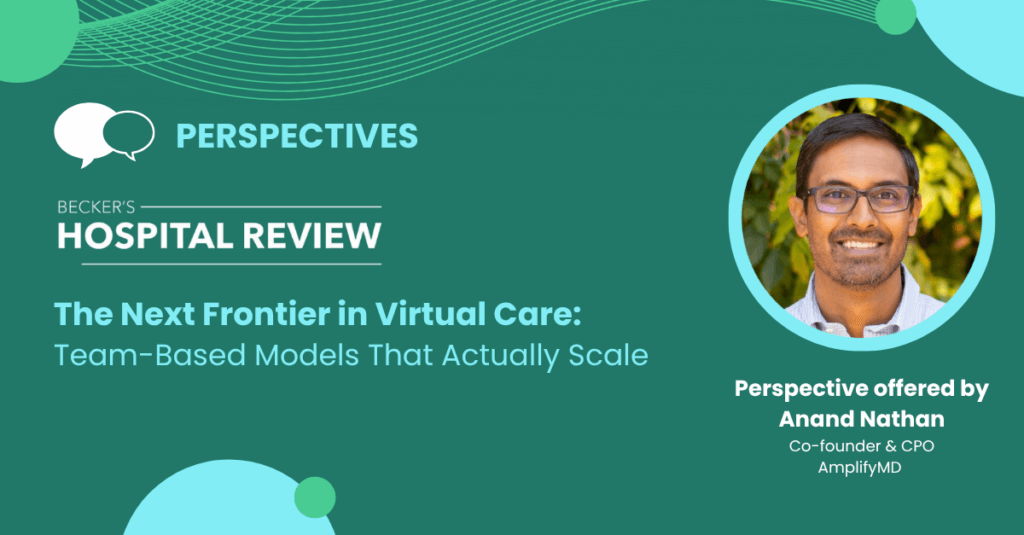AmplifyMD’s CEO, Meena Mallipeddi, regularly speaks with innovative healthcare leaders on her podcast, The Seamless Connection. This Q&A comes from her conversation with Tom Stanis, Co-Founder and CEO at Story Health. (Responses have been condensed and edited.)

Tom Stanis
Co-Founder & CEO, Story Health
What brought you to healthcare?
My background is in tech/computer science. When I was working at Google, I was involved in a pretty bad biking accident, though thankfully, ended up with no broken bones. During the routine post-accident CT scan, they found a mass in my kidney, which turned out to be stage 1 kidney cancer. Since we were able to catch it so early, I like to say getting hit by a car saved my life!
That event made me reflect on how I can contribute to the greater good and led me to a mission in healthcare.
How did you bridge the gap from technology to healthcare?
When I came back to Google, we started Verily and worked on a ton of different new technologies and inventions to dramatically improve the tools available for managing healthcare. However, even when the technology is great, there’s still a challenge of adoption and access. My mission then became: How can we change the care delivery model to make specialists more effective and more scalable with the work they want to do, which led to Story Health.
Talk about Story’s mission.
Our mission is all about transforming specialty care delivery, together with our customers. How can we build a treatment plan that goes beyond the clinic to support patients at home and on a regular basis? This requires a guidance program for both the physician and the patient. Also, what can we do about the barriers that patients run into at home, from being able to afford their medications or getting to the lab for tests? So we built what we call a health coaching team that really assists to make sure this runs well.
Outcomes for patients have been significant, specifically in cardiology. Can you talk about that?
It’s very difficult for cardiologists to keep up with all the individual changes in treatment for heart disease, but we can actually do that all at home now. If you look at the science, 3% of patients receive optimal guideline-based treatment. Story Health has elevated this to 60%, which showcases our model’s effectiveness. And that keeps patients out of the hospital and even recovering from the disease.
Talk about the adoption from the patient’s perspective.
In many cases, you can’t just have one clinic visit and put somebody on optimized guideline-directed medical treatment, as your body needs time to adapt to each of the small changes. It’s a long process to adapt. By monitoring patients every week or two, we can watch these small changes, keep them from being hospitalized, and ensure they recover better.
How can patients access this service?
We started the business by traditionally working with health systems. However, as you know, there are “specialist deserts” where access is limited. In those places, we’ve actually had to build more opportunities to work with patients directly. I think it’s more effective to build on an existing system where patients are most comfortable. Trust with a patient’s doctor is something to build on, not to replace.
How does this current shortage of specialists affect your model?
We’ve built a very wide model where the specialist is supported by practitioners who run the plans and health coaches who help the patient with any barriers they may encounter. With this bigger support system, we can increase the panel size that a specialist covers to meet demand and engage with patients when needed.
What’s next for Story Health?
We’ve always held a medically informed position where we want to deeply understand the conditions we manage. But there’s also an opportunity for more of a horizontal opportunity where we can help patients that have many different kinds of diseases that need support outside the hospital. Most patients don’t have just one specialist. They may be seeing a cardiologist, a nephrologist, and an endocrinologist. This is very common, and yet, a lot of times, we’re creating more integrated and holistic treatment plans for patients with complex needs. That’s exciting to me!
What excites you about the future?
What keeps me going is every patient’s story. For every patient to have a positive experience, it will take a significant change in the system, which we all know does not happen overnight. This journey is a long-term commitment, and we need to stay persistent in order to see transformation in healthcare.
Listen to Tom Stanis’s entire conversation with Meena Mallipeddi on Episode #31 of The Seamless Connection podcast hosted by Slice of Healthcare.





